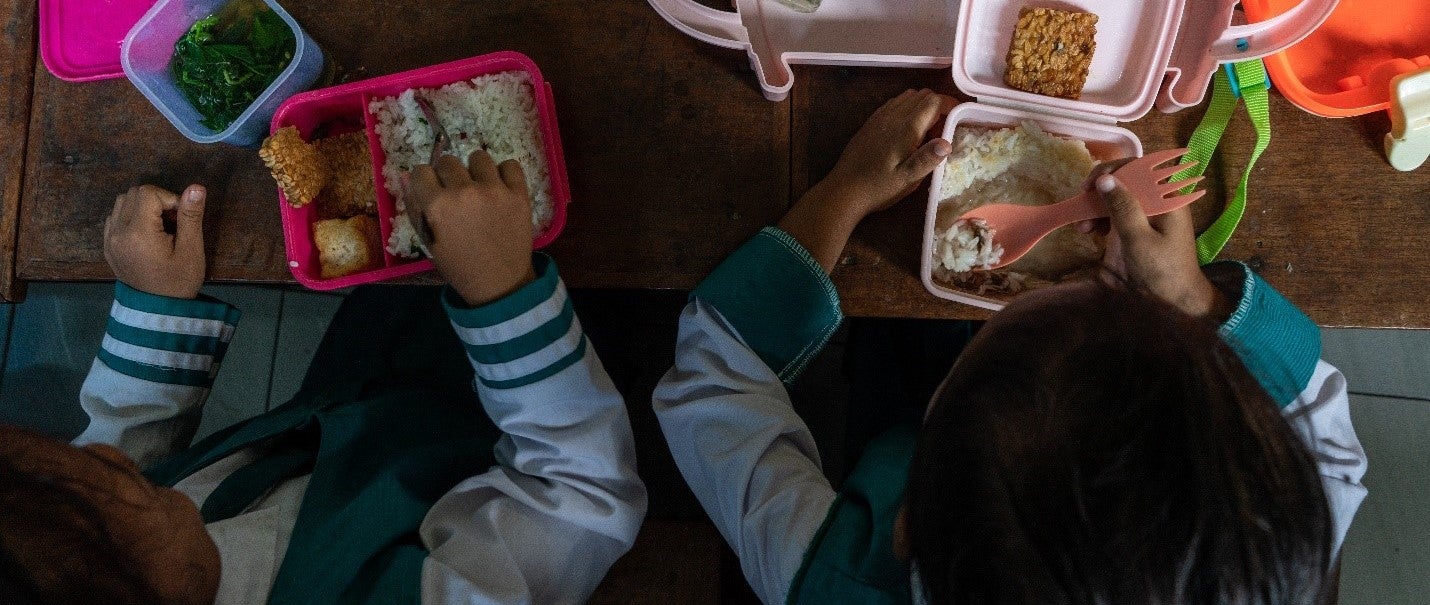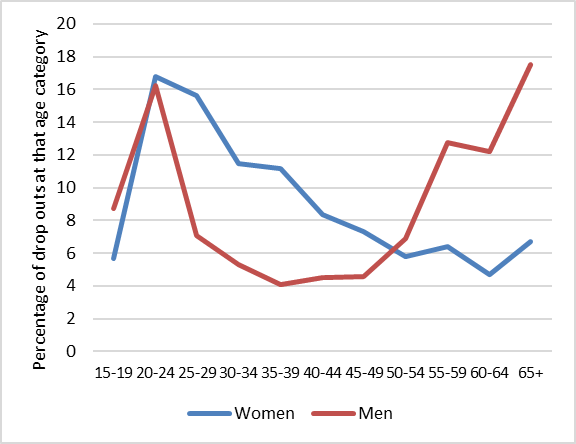 Early child education activities at Purwosekar Village, Malang District, East Java.
Early child education activities at Purwosekar Village, Malang District, East Java.
Pupin Marini is a mother of one. After her child was born, she would have liked to continue her career as a marketing staff in the media sector for greater personal growth and to bring more income to the family. However, like millions of women with small children in Indonesia, Pupin had little choice but to stay home and care for her child. And, if she is like most women in Indonesia, Pupin is unlikely to rejoin the workforce.
Pupin’s case exemplifies a missed opportunity for Indonesia. The scarcity of childcare prompts many women to stop working outside the home. With greater investment in childcare and early childhood education, Indonesia could reclaim a productive segment of its labor force and boost economic growth.
Low female labor force participation
Indonesia’s female labor force participation rates are comparatively low for the region, around 53 percent in 2021. These figures have remained unchanged overall for over two decades, despite structural changes to the economy, gains in education, declining early marriage rates, and lower fertility. In addition, the gap between men and women in labor force participation rates are some of the highest in the region at around 30 percent. If Indonesia could increase women’s labor force participation to just 58 percent, the World Bank estimates that Indonesia’s economy would grow by an additional $62 billion.
There is emerging evidence that lack of affordable and quality childcare services are a key constraint to women working. Data from Indonesia’s labor force survey (Sakernas) show that around 40 percent of women initially working in wage employment are no longer working after marriage and childbirth and almost half of these women cite family related reasons for dropping out (see chart). Expanded access to early childhood education services, on the other hand, is linked to increased employment probability (Halim et al., 2021).
| Almost half of the women who dropped out the labor force in 2018 did so for family-related reasons |
|
|
|
|
Note: Sample is women and men who were out of the labor force in 2018, but who had previously worked and experienced job termination in the year prior to survey. Source: Alatas, H. J. Lain and Diahhadi Setyonaluri Wormen at Work in Indonesia: Policy Brief March 2020; Sakernas 2018.
Investing in Childcare Delivers Benefits
Supporting investments in the childcare and early development can deliver long-term human capital gains for future generations of workers. In addition, economic gains can be realized in the short term, through improvements in employment and the earnings of women as well as improvements in firm productivity. Finally, investing in childcare creates jobs: when women join labor markets, there is a greater demand for childcare jobs and services.
Yet Indonesia’s overall public spending on early childhood care and development is estimated at around 0.04 percent of GDP, well below Organisation for Economic Co-operation and Development recommendations of 1 percent of GDP. How would increased public spending on childcare and pre-primary education affect Indonesia?
Public expenditure on childcare and pre-primary education and total public expenditure on early childhood education and care (as a % of GDP, 2017 or latest available)
Source: OECD (2021), for Indonesia based on World Bank calculations for 2019 budget
According to a recent World Bank study, if Indonesia increased public expenditure on childcare services, the benefits would be progressive and welfare-enhancing; all income categories would benefit from the policy intervention, although benefits would be greater for lower-income segments. Increasing public expenditure on childcare services also would lead to more women joining the labor markets, and growth gains to the economy above baseline scenarios. The model simulated two scenarios: public expenditure increases to 0.1 percent and to 0.5 percent of GDP. The impacts of these increases in public expenditure on growth and female labor force participation would be:
| Cost of intervention |
GDP growth (percentage points above baseline (by 2030) |
Projected Female Labor Force Participation Rate (by 2030) |
Link to Policy Commitment |
| Baseline Scenario: current investment levels are maintained (0.04% of GDP) |
- |
53.5% |
None |
| Scenario 1: Childcare investments are 0.1% of GDP |
0.40% |
56.2% |
National Medium-Term Development Plan/RPJMN (2020-2024) Target: 55% |
| Scenario 2: Childcare investments are 0.5% of GDP |
0.69% |
58.3% |
G20 commitment of 58% by 2025 |
The study shows that Indonesia would benefit from greater public expenditure on childcare services . To realize these gains, Indonesia could consider several policy actions.
First, developing a comprehensive vision and roadmap that outlines national policies, targets, and objectives, and clarifies the roles and responsibilities of participating ministries and across government to support increasing the availability of childcare.
Second, carefully designing and rolling out fiscal stimulus for childcare services, especially targeting low-income and disadvantaged children and promote a range of services and solutions for families with children from birth to six, linked to enabling work for parents.
Third, making investments that support the entire care economy. It is likely that any fiscal stimulus focused on expanding childcare will also entail significant labor and other support services to grow the sector. The expansion of childcare services also would necessitate targeted support to entrepreneurs, especially women entrepreneurs, to establish and run childcare businesses.
Lastly, continuing to engage with evolving social norms through information campaigns and outreach services.
By investing in these untapped resources, Indonesia will be investing in its future.





Join the Conversation